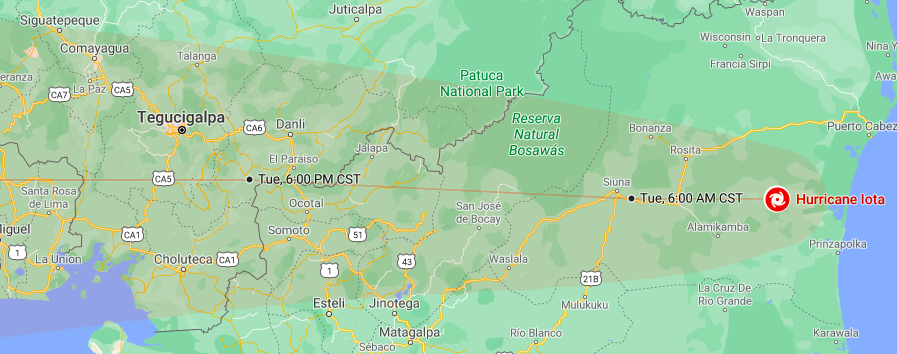Hurricane Iota made landfall as a Category 4 Hurricane on the coast of northeastern Nicaragua late Monday night. It’s the second Category 4 Hurricane to hit Nicaragua this month as two weeks ago Hurricane Eta also made landfall in the same region. While Hurricane Eta took a turn to the north, Hurricane Iota is expected to take a path west along the Honduran-Nicaraguan border region which puts farms and factories more in the crosshair of the storm. While the storm is expected to weaken with winds, it will be catastrophic rainmaker and is expected to cause widespread flooding and mudslides.
The eye of the storm is expected to a more-direct hit in the regions of Jalapa, Ocatel, Somoto, Condega, Pueblo Nuevo, and Estelí in Nicaragua as well as Danli, the Jamastran Valley, and the capital region of Tegucigalpa in Honduras – all of which are expected to feel the impacts of the storm.
The Nicaraguan Chamber of Tobacco recently reported that most of the crops in Nicaragua had not been planted for the upcoming growing season. With Hurricane Iota coming through the region, the Chamber says the start of the upcoming growing season could be delayed until things settle down in the area.
It is known that Hurricane Eta had caused some impacts. At Perdomo Cigars’ Finca Janine in Jalapa, Nick Perdomo reported his team landfilled thousands of sandbags and built passageways and moats around the entire 288 acre farm to prevent floodwaters from reaching the farm and curing barns.
The storms that have hit this region bring back memories of 1998’s Hurricane Mitch which entered Honduras and traveled southwest impacting the tobacco growing region along the Honduran-Nicaraguan border with rainfalls of 50 to 75 inches causing catastrophic damage and fatalities.
The COVID-19 pandemic could also be a concern with the storm heading through the region. If evacuations are ordered and citizens are relocated to shelters, there is a risk of the virus spreading in those facilities.
Image Credit: Google Maps





